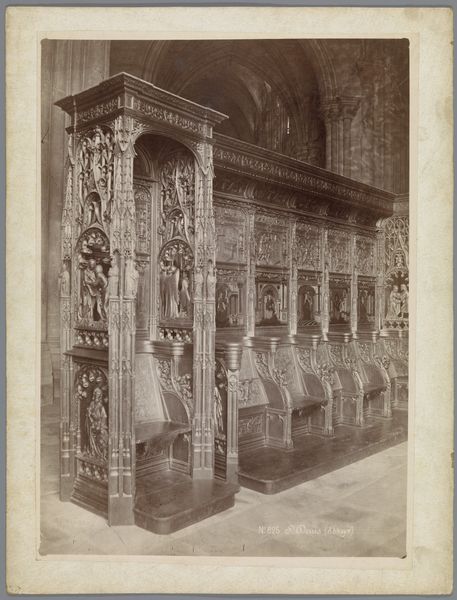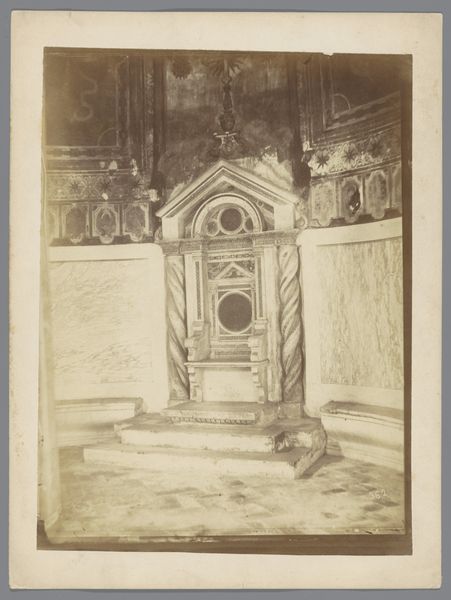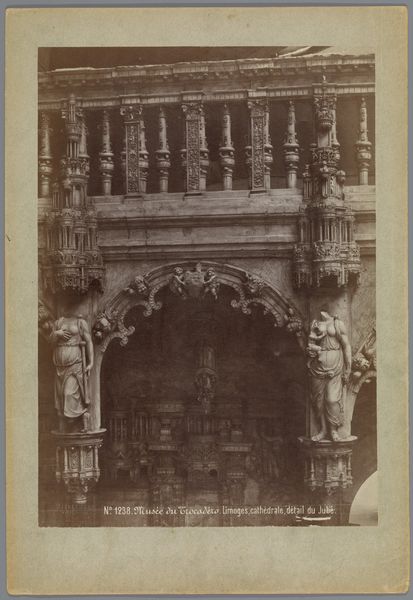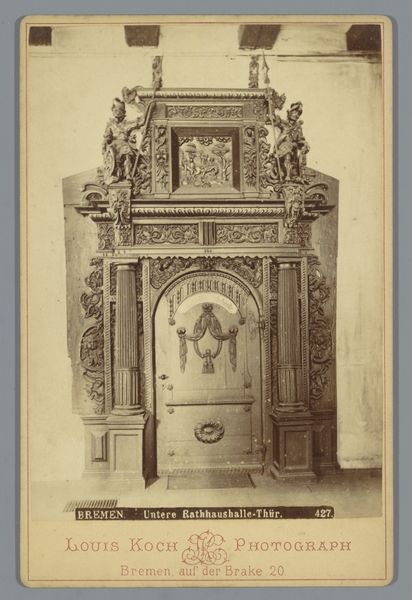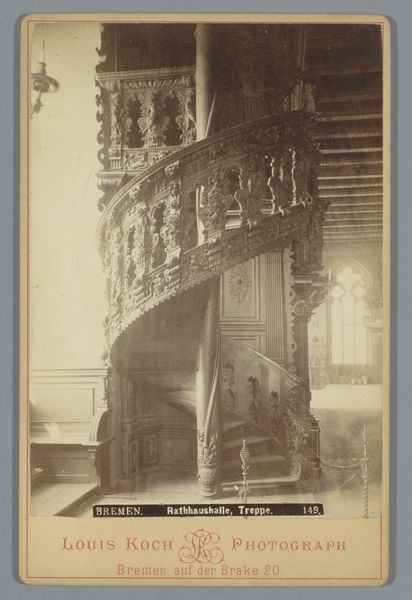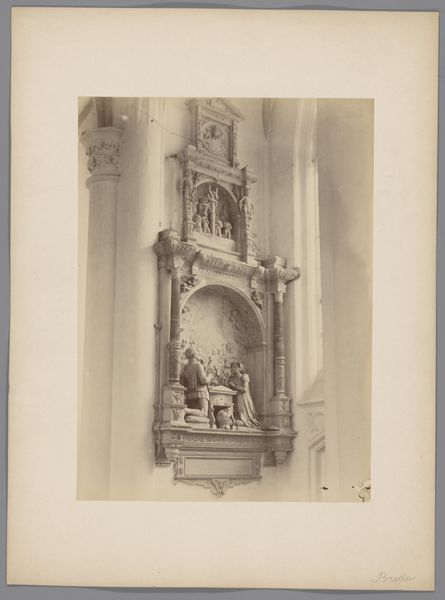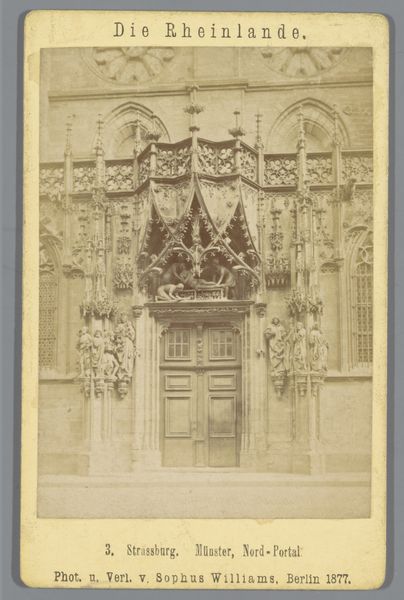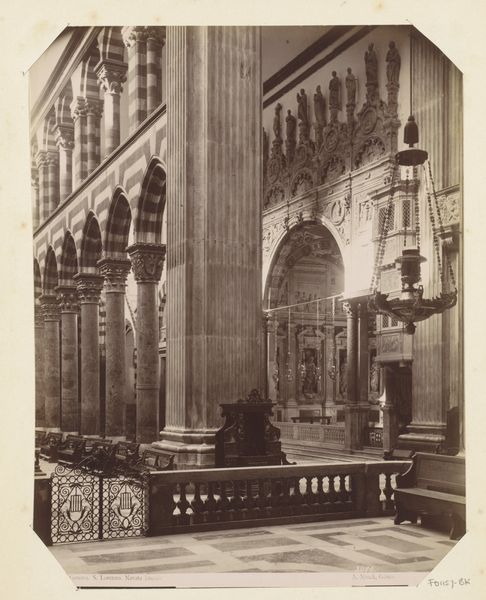
photography, gelatin-silver-print, wood
#
portrait
#
photo of handprinted image
#
aged paper
#
toned paper
#
photography
#
gelatin-silver-print
#
wood
#
genre-painting
#
italian-renaissance
Dimensions: height 260 mm, width 203 mm, height 320 mm, width 239 mm
Copyright: Rijks Museum: Open Domain
Editor: Here we have "Koorbanken van de kathedraal te Siena," taken sometime between 1851 and 1890, probably by Paolo Lombardi. It’s a gelatin silver print on wood. The tones give it a hazy, almost dreamlike quality. What strikes me most is the incredible detail in the woodwork. How do you interpret this work, thinking about its historical context? Curator: This image offers a fascinating lens through which to consider the role of religious institutions and their intersection with power and identity in 19th-century Italy. What purpose did such overt displays of opulence serve within a religious context? How did such lavish expenditure impact the communities they were supposed to serve? Editor: Well, on the one hand, there’s the beauty of it. The skill involved in crafting this…it must have taken years. So much talent and resources invested in one space. Maybe it was intended to inspire awe. Curator: Precisely. But awe for whom, and at what cost? The opulence serves as a clear marker of authority. This wasn’t merely about spiritual inspiration; it was about visually reinforcing the Church's dominance. The artistry becomes a tool for social stratification and control. The camera also plays a part. Photography at the time wasn't just documentation; it was another way to spread power structures to an audience far beyond the cathedral. Editor: That makes me think about access, too. Who actually got to experience this space? Curator: Exactly. While seemingly frozen in time, we must acknowledge its contemporary influence and meaning in the face of modern intersectional dialogues about social justice, historical culpability, and artistic expression. Thinking critically about architecture and the art that appears in it, therefore, can open avenues toward accountability and greater inclusion. Editor: I never thought of looking at a photograph of a choir stall as a kind of…political statement, really. Curator: Seeing beyond the aesthetic beauty reveals deeper, often uncomfortable, truths about power, representation, and societal values embedded within art and its documentation.
Comments
No comments
Be the first to comment and join the conversation on the ultimate creative platform.


